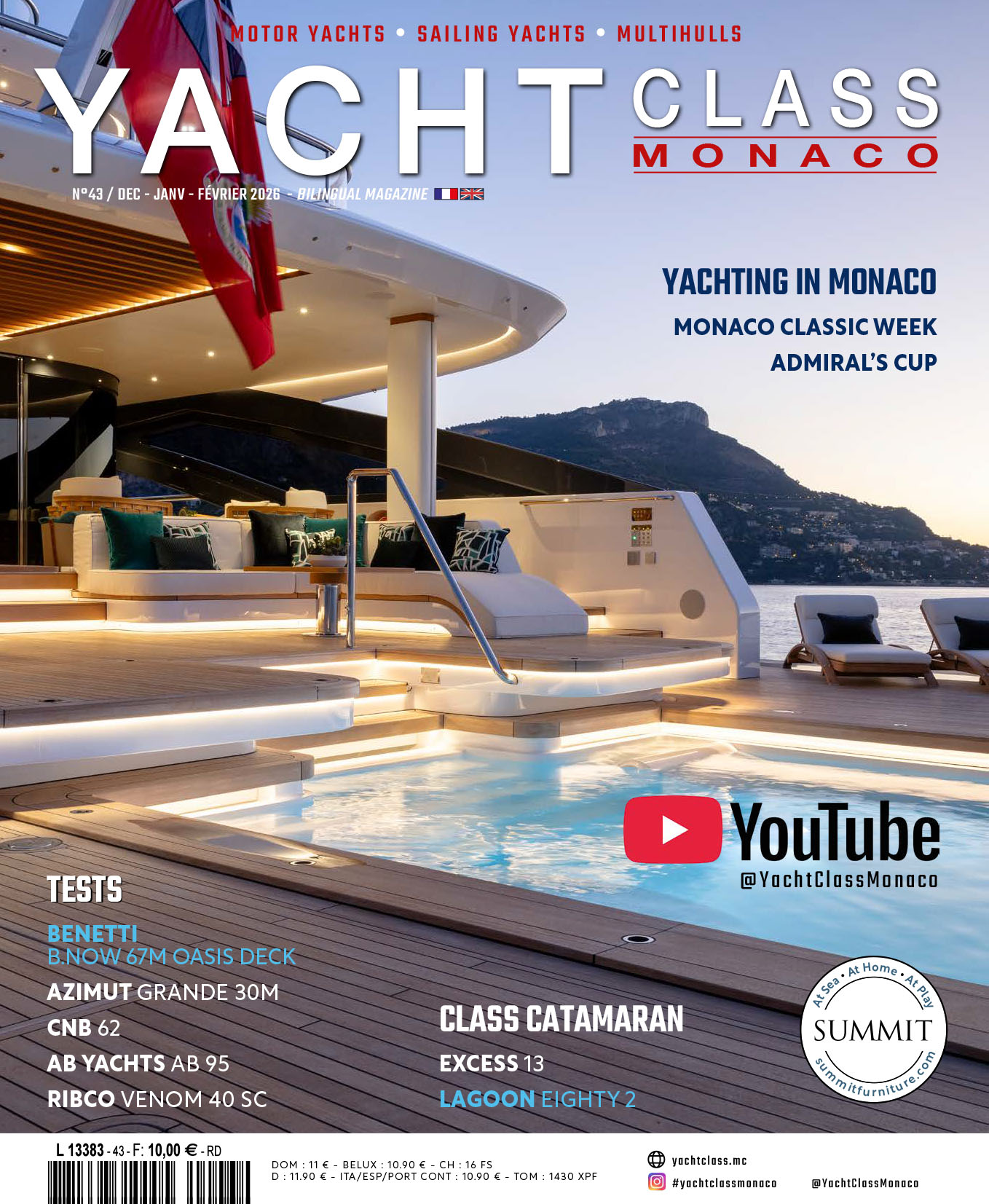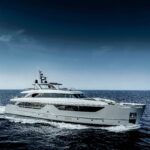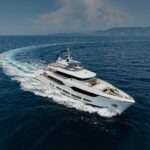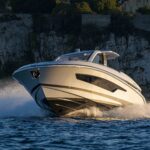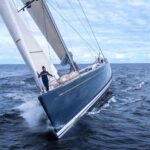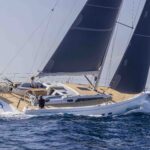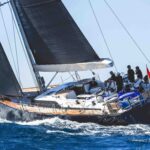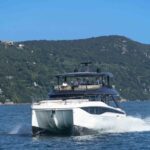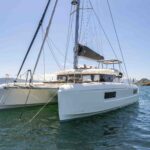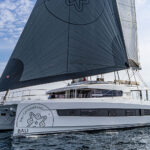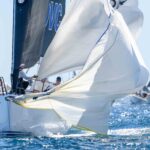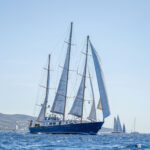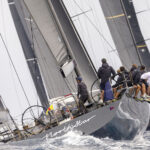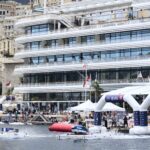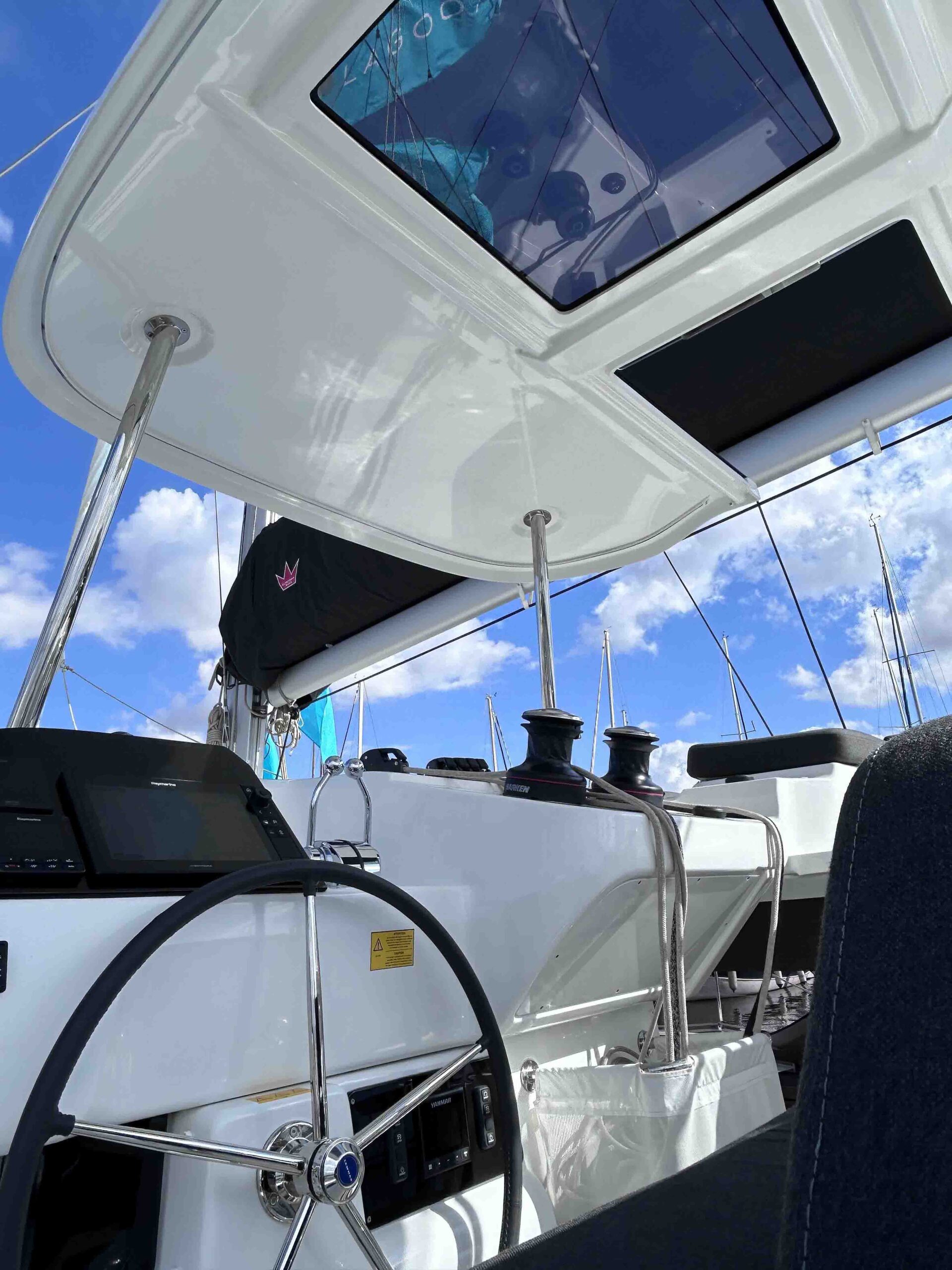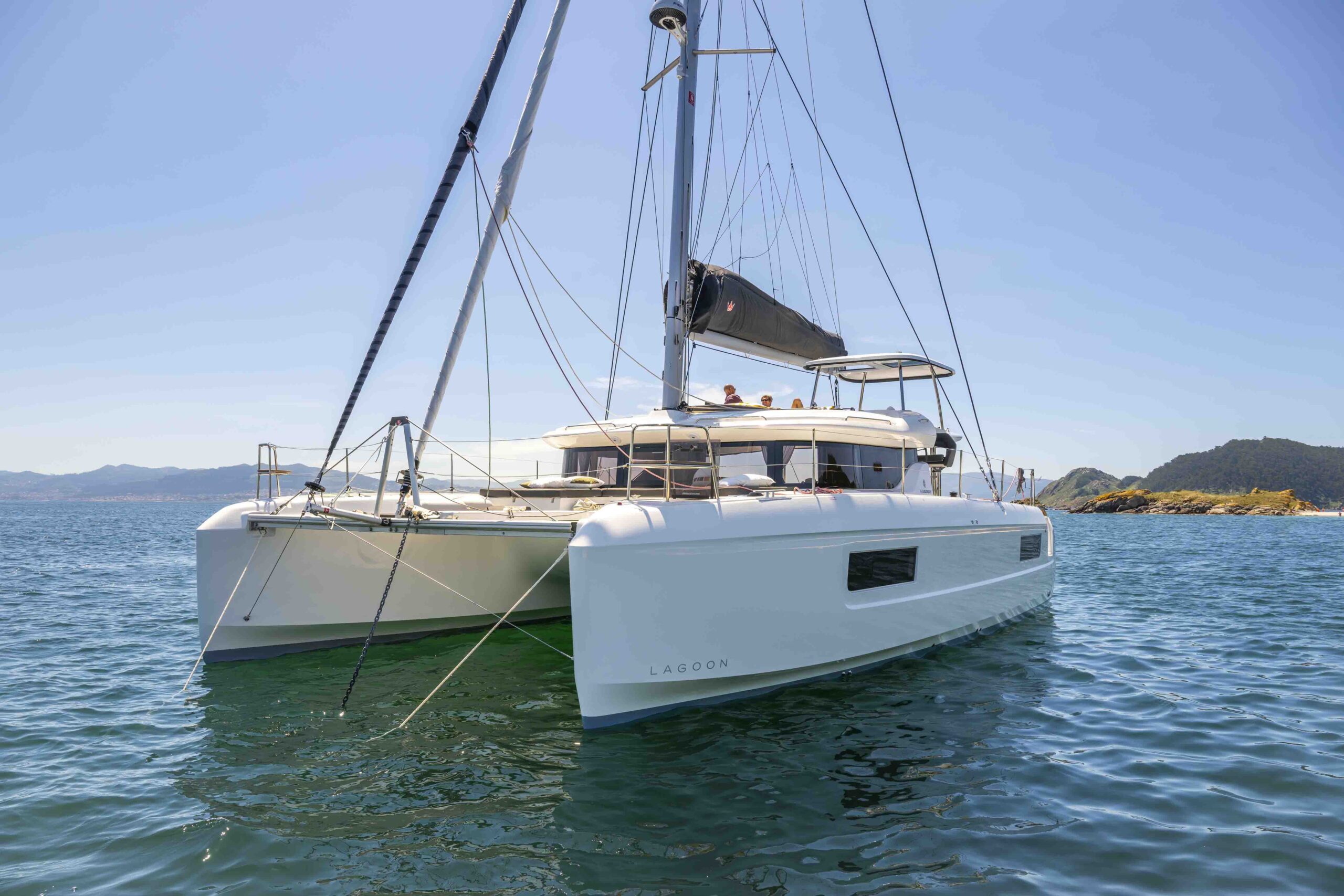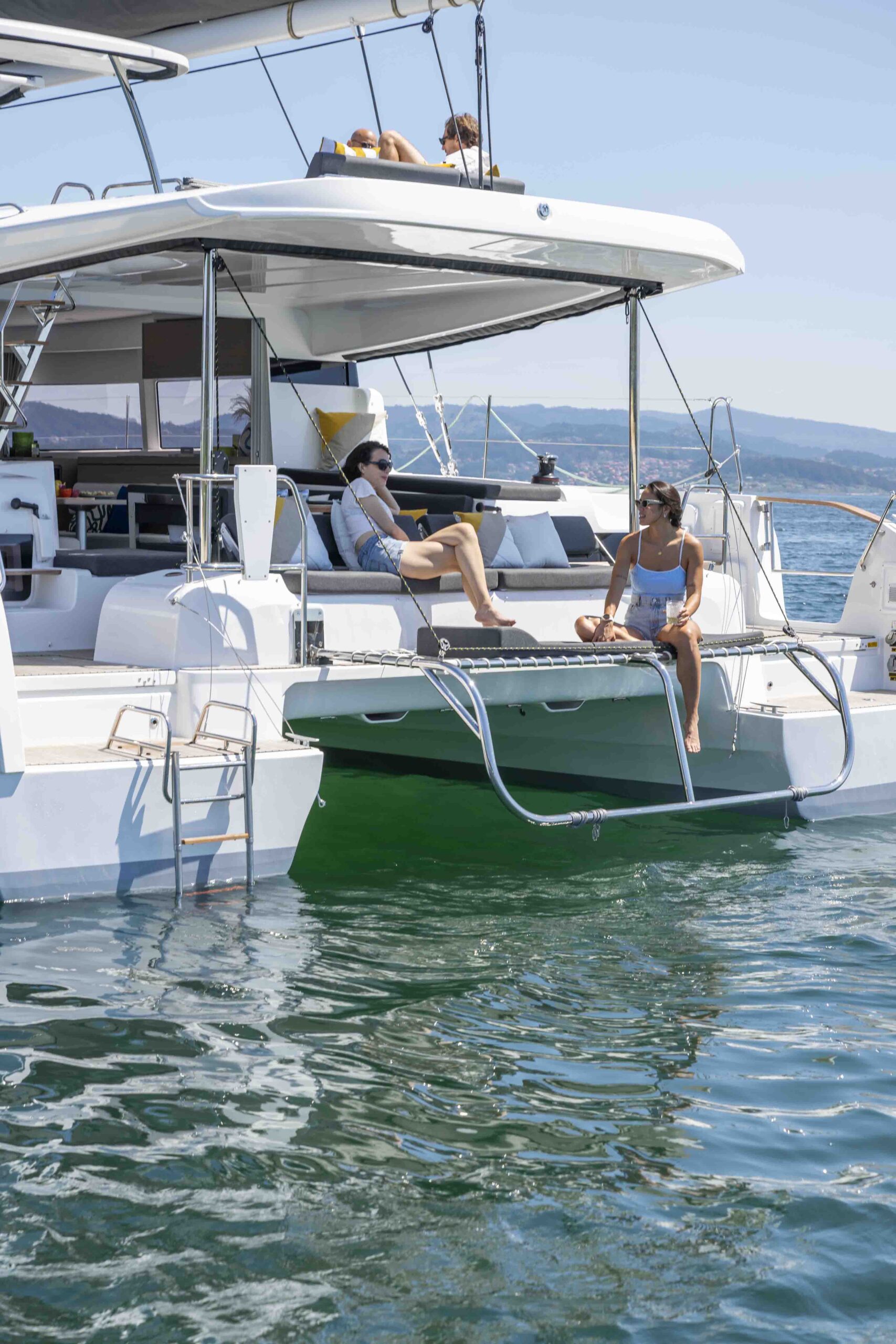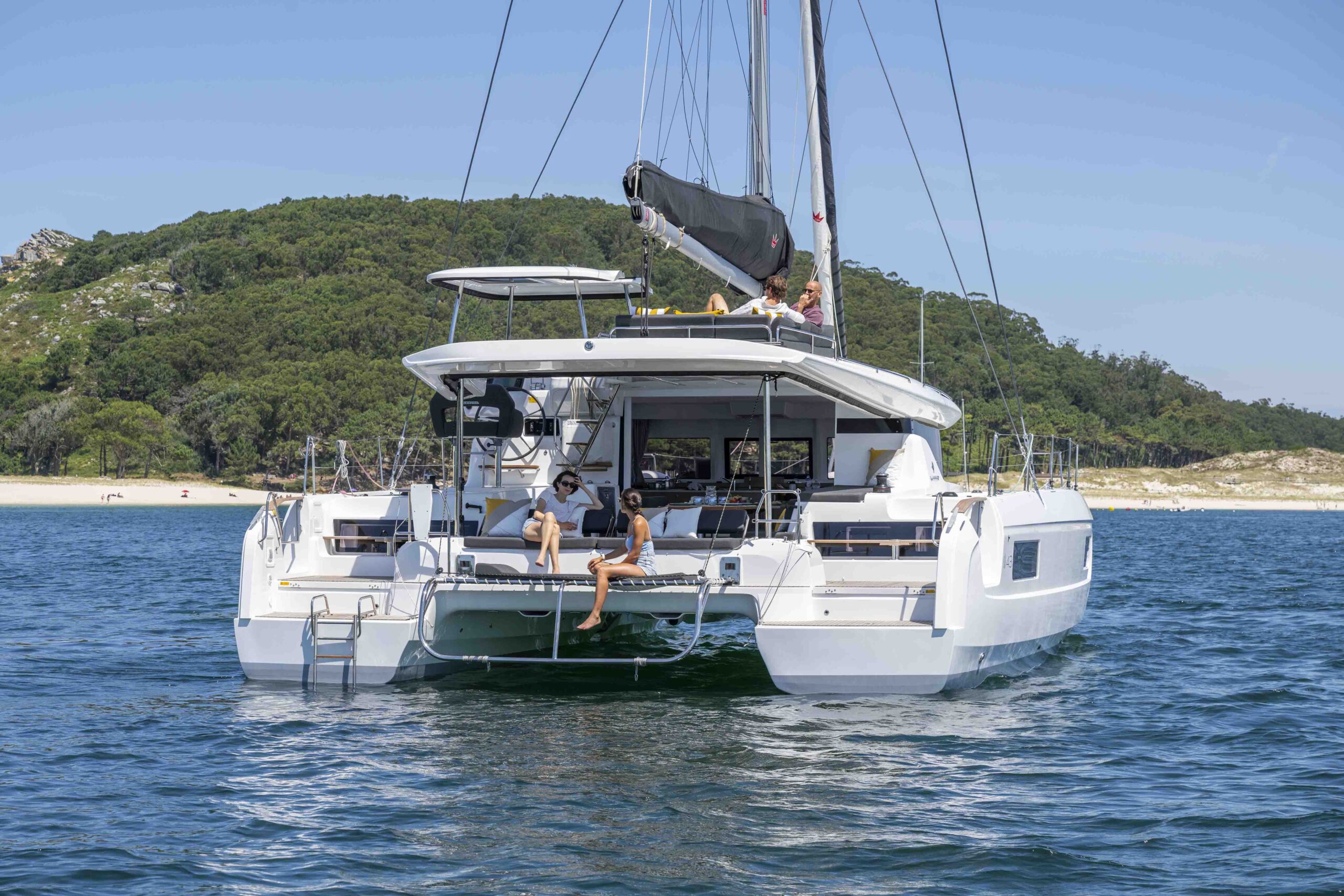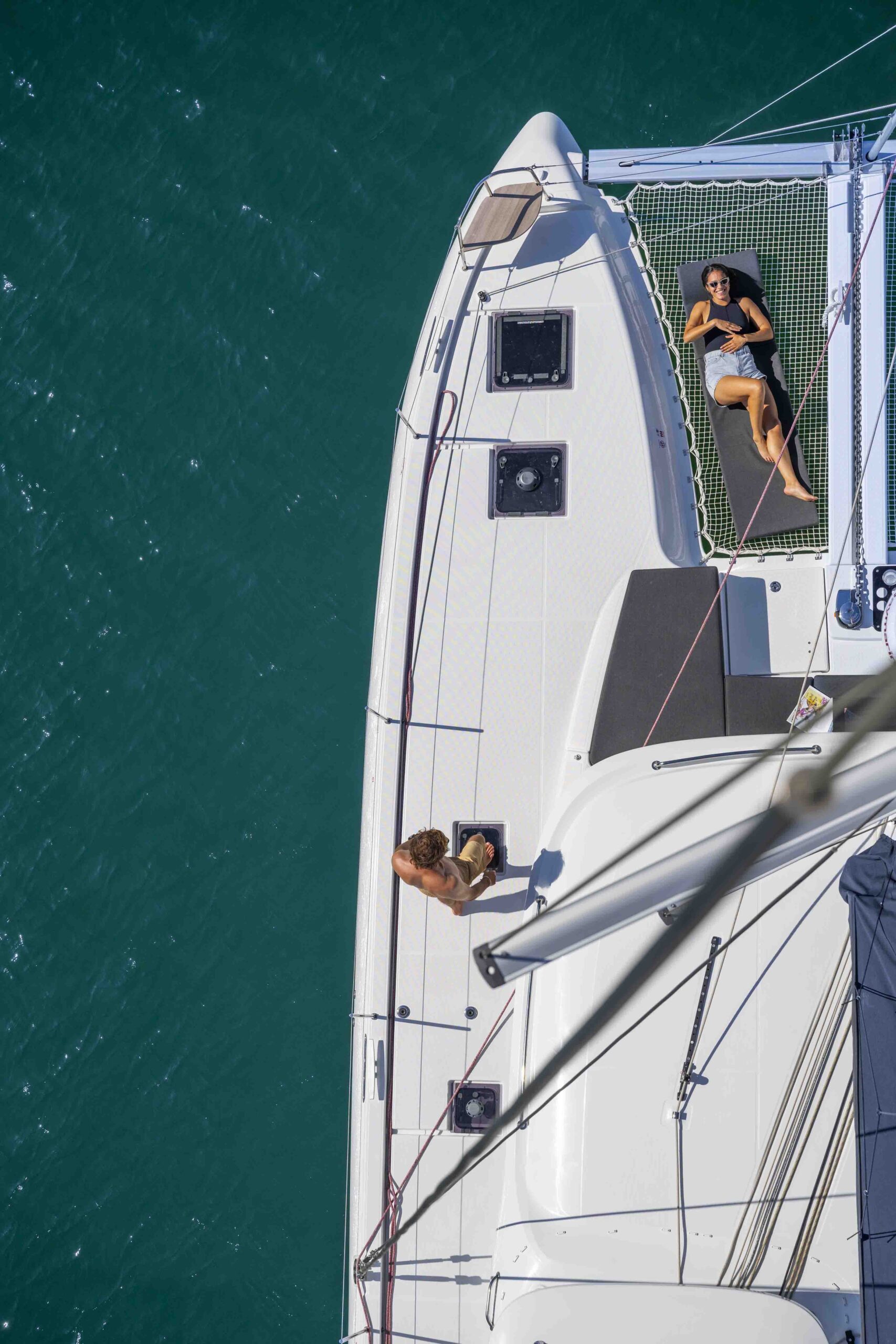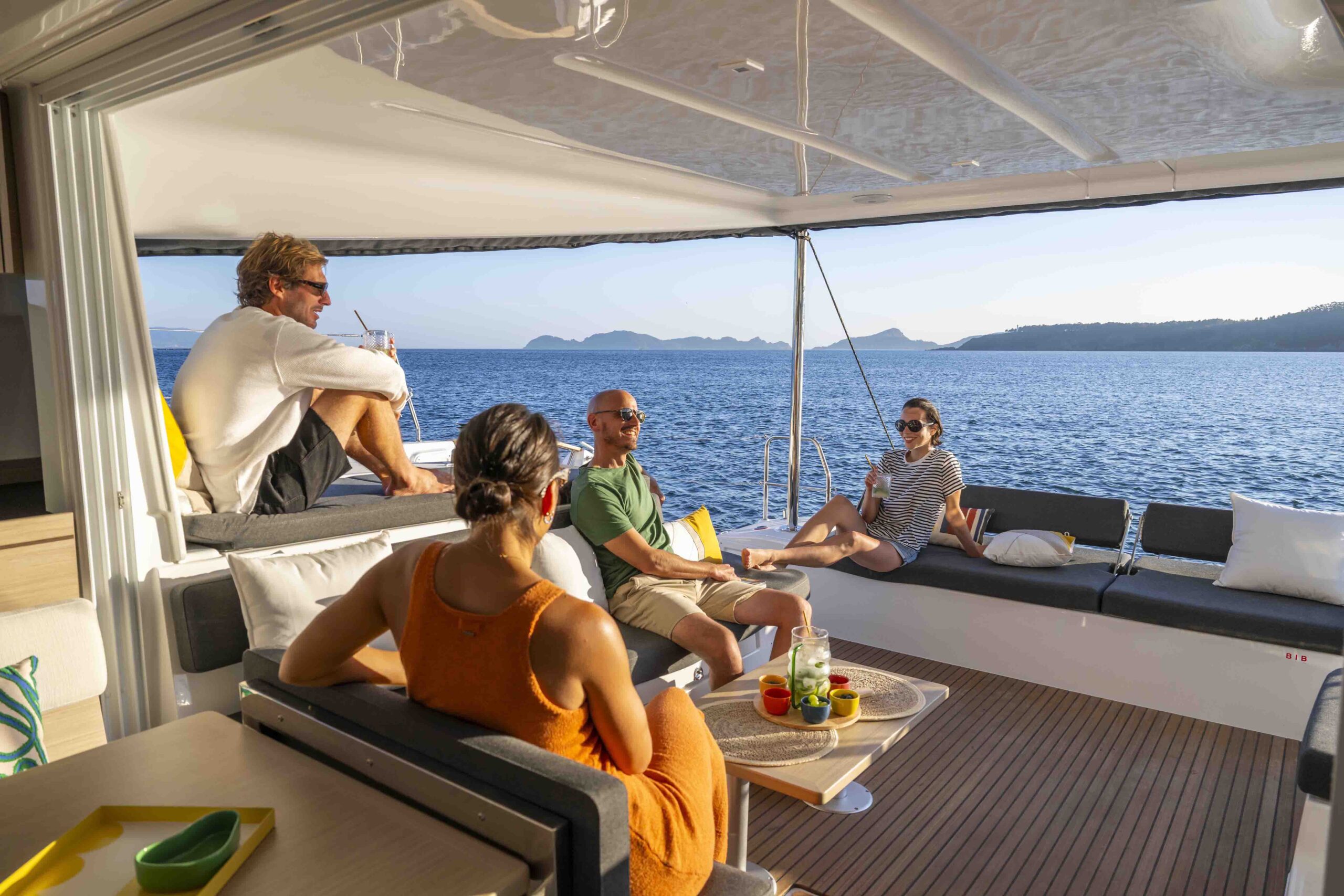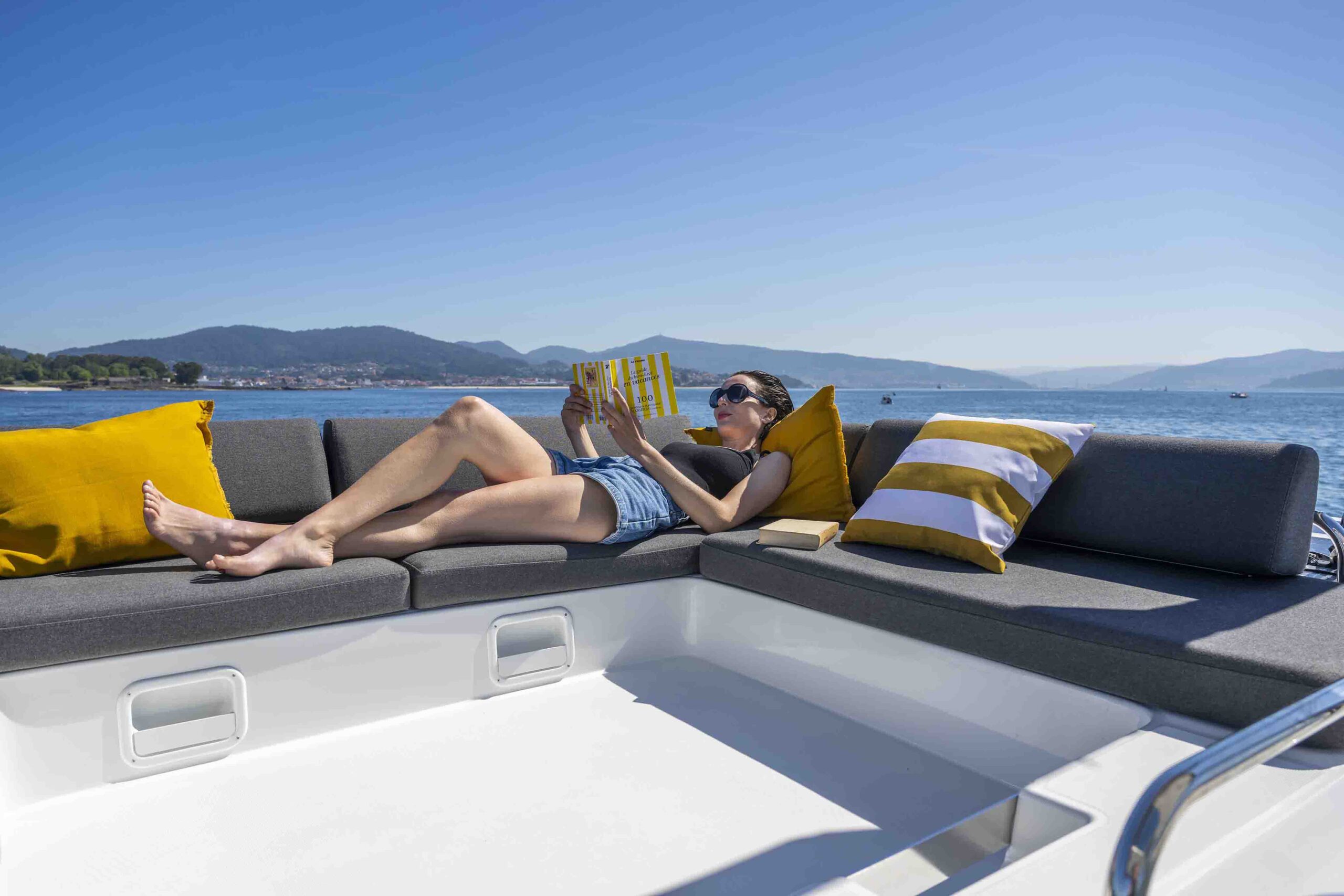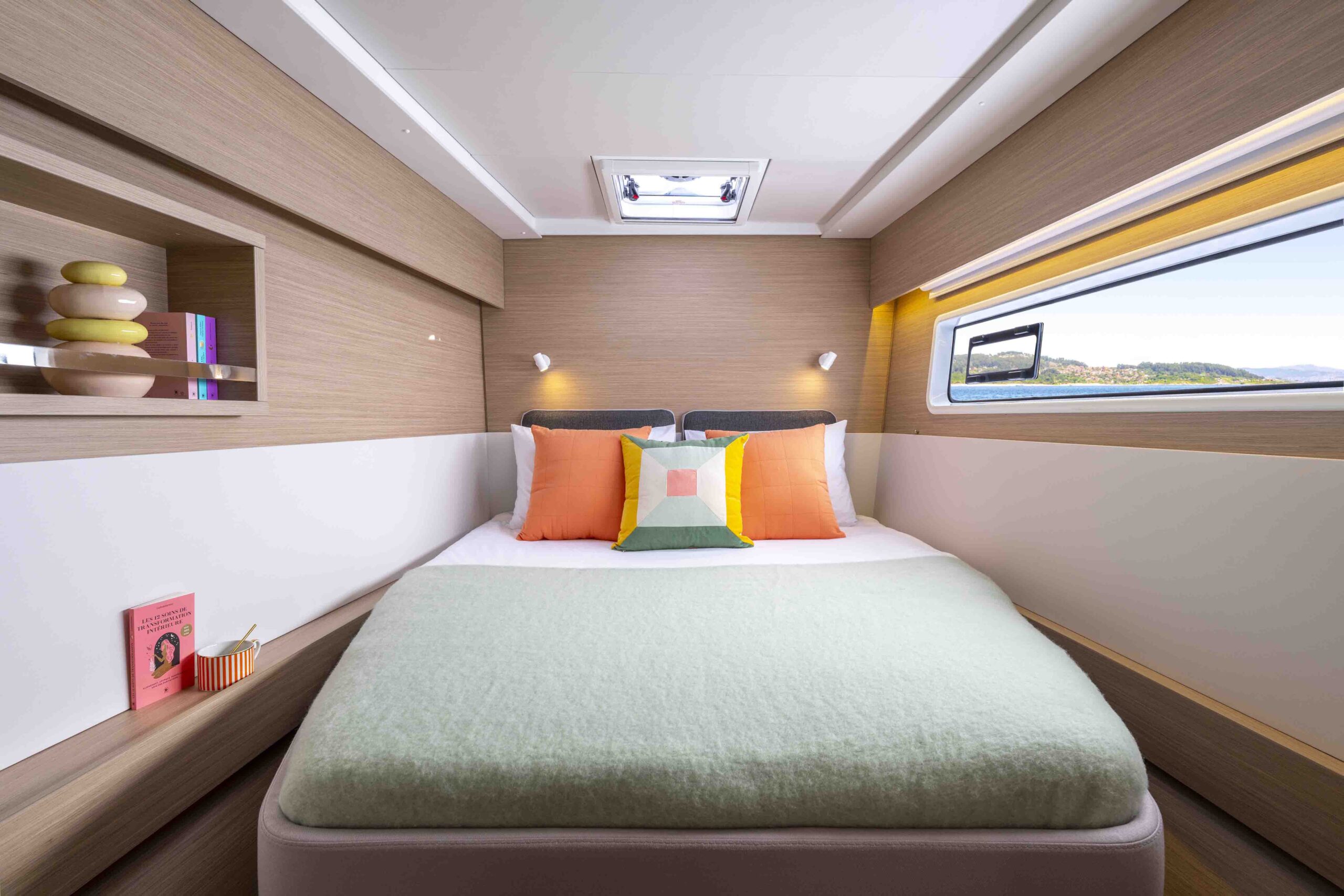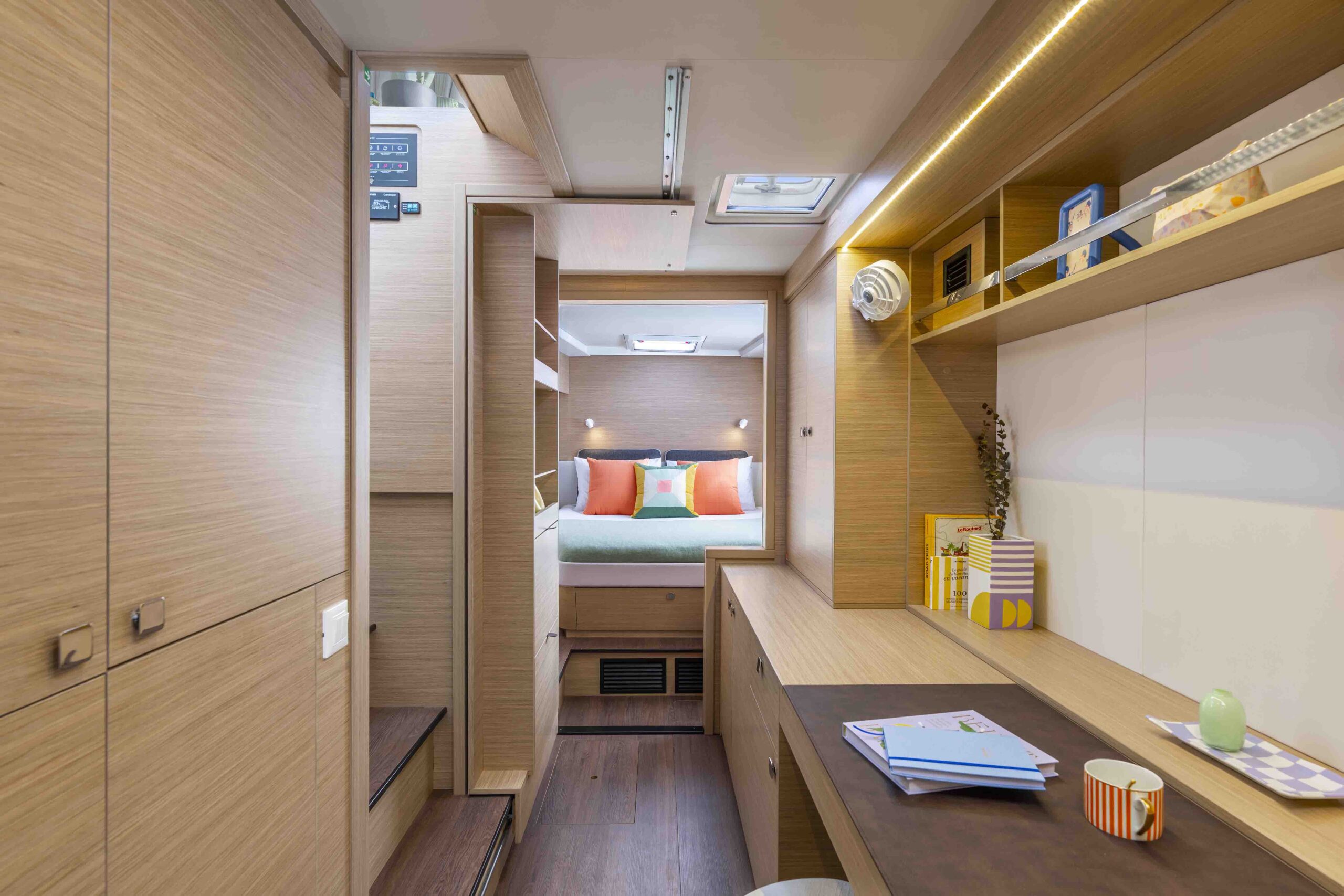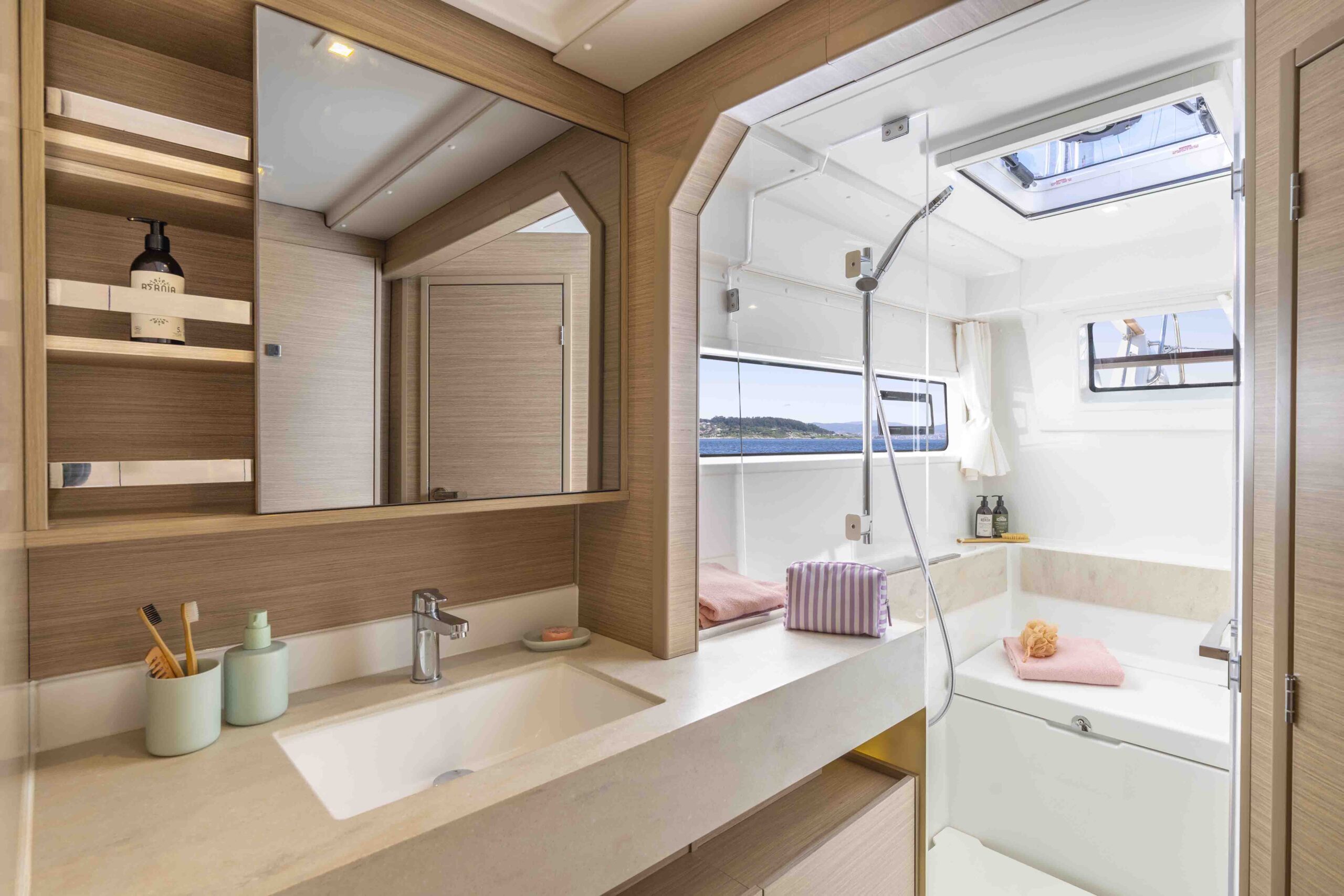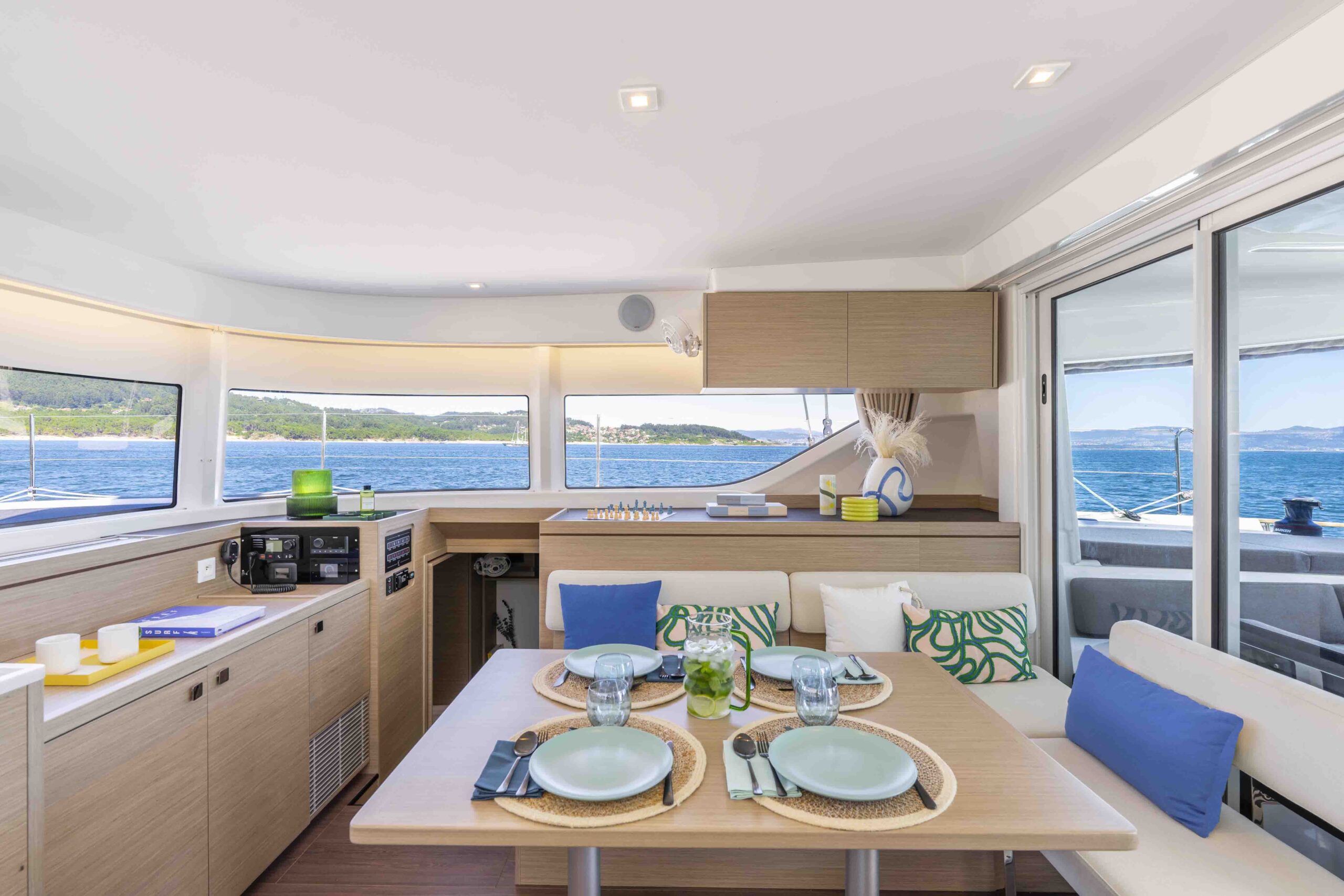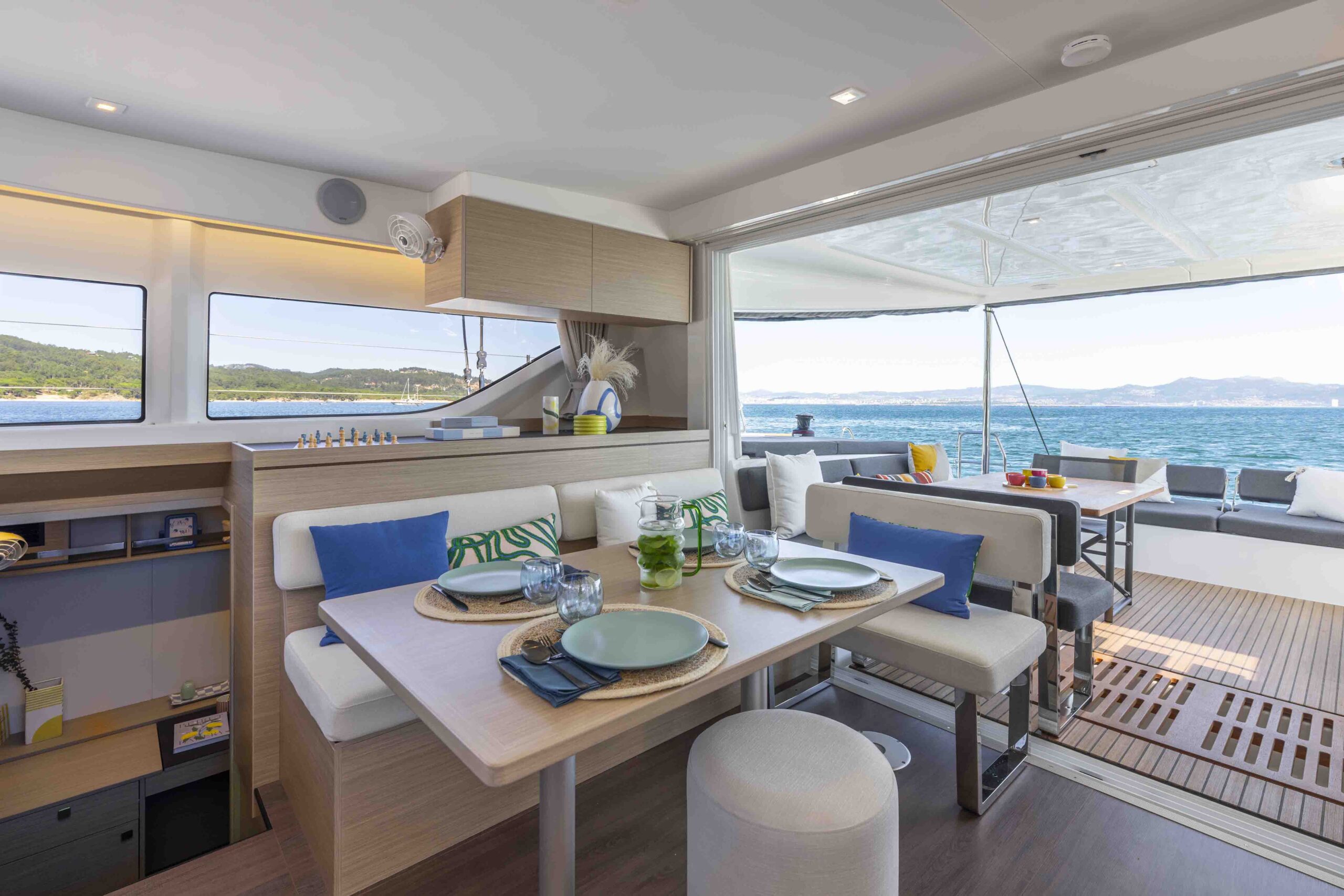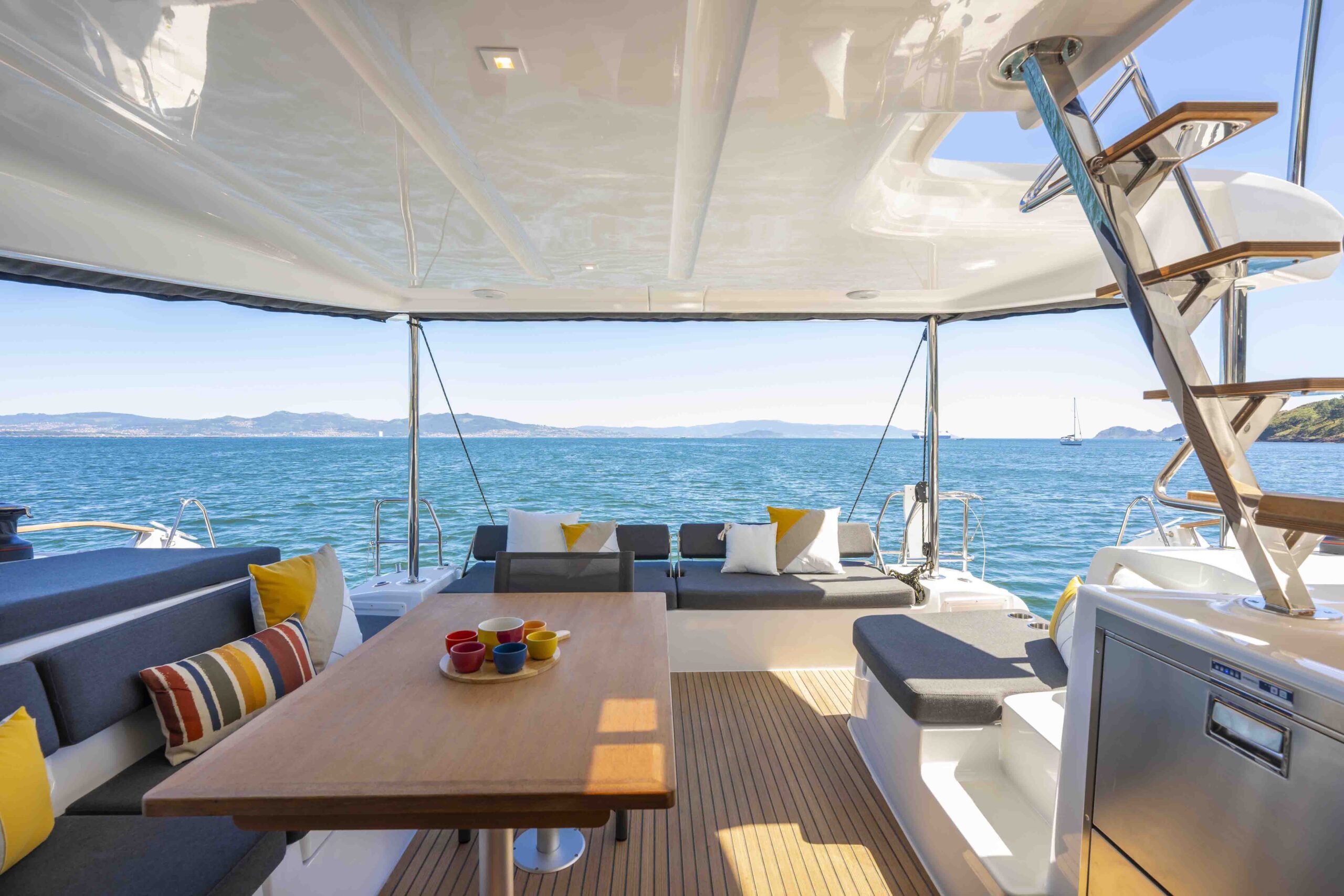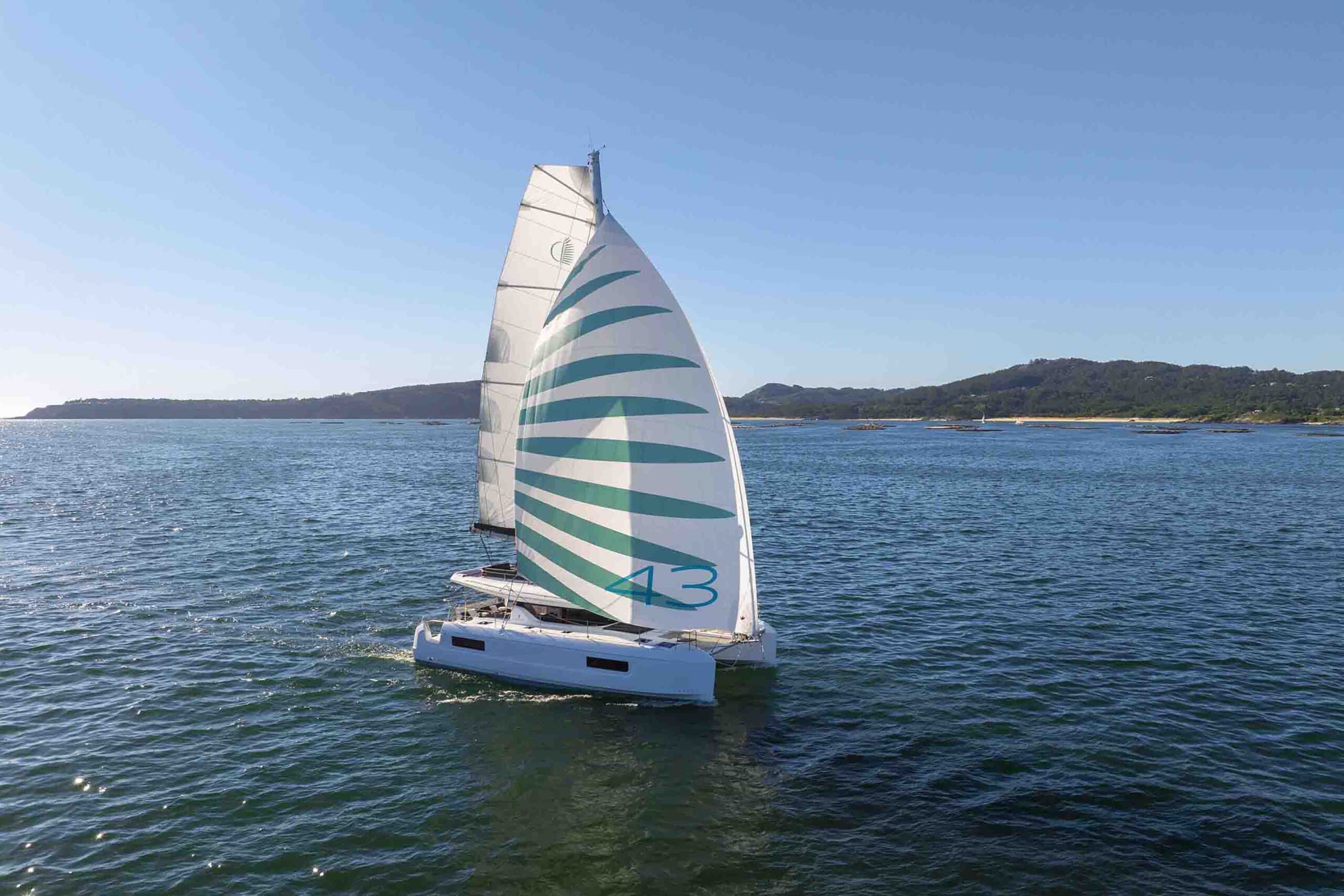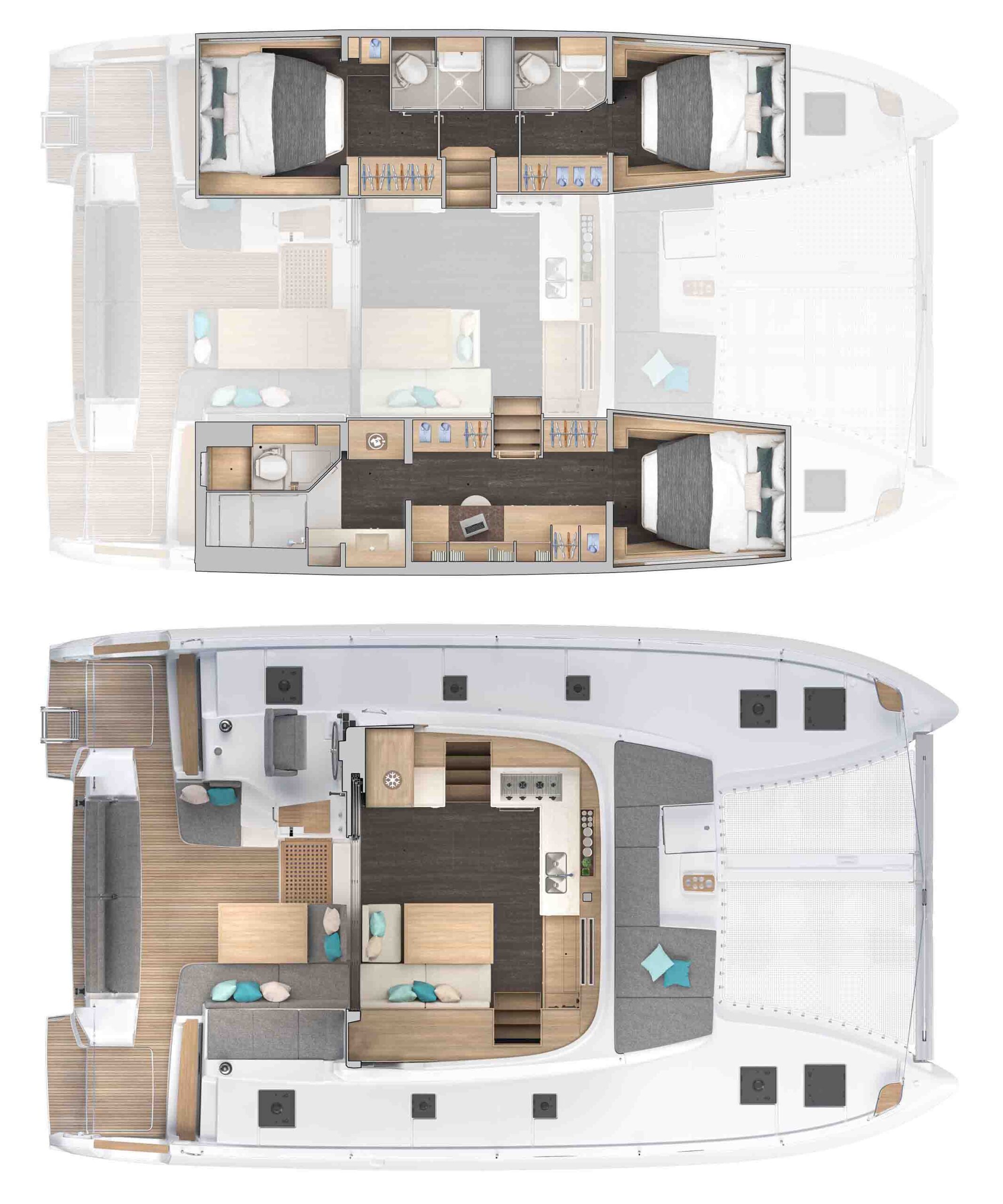Presentation
Yacht Class n°41 (June-July-August 2025)
Meant to replace the highly popular Lagoon 42, the Lagoon 43 revealed some considerable qualities during a test sail in the Balearic Islands. Fittings, rigging, volume and modularity are just some of the ingredients that the world’s leading catamaran manufacturer has put in place to write its next success story. Benvinguts on board!*
The test of the new Lagoon 43 took place in Mallorca on a hot and cloudy day. Slight north-westerly gusts swept across the bay of Palma, the last vestiges of an episode of tramontana. The French shipbuilder, based near Bordeaux but whose 43-foot boatyard is in Bellevigny (Vendée), chose the waters that saw the Phoenicians, Carthaginians and Romans land on the island to hoist the sails of the boat that is destined to replace the tried and tested Lagoon 42, launched in 2016 with over 1,000 units sold. From the pontoon, we can see a change in the design of the hulls. Taller, wider and more voluminous, the architects at VPLP Design have redesigned the prows in a very “monohull” style, like the rounded scow bows of Class 40 or Imoca racing boats. It is a way of raising the boat above the water, reducing her wetted surface and, ultimately, increasing speed and, above all, space in the floats. “We took up the challenge of designing hulls that would provide real added living space in the cabins, while maintaining the boat’s seaworthiness,” reports the architectural practice.
Generous bows and coupé doors
As well as generous bows and long hull portholes, the Lagoon 43 has an eye-catching detail at the stern. Two interconnecting doors, also known as planking doors, are harmoniously positioned to make boarding and disembarking easier. Anyone who has experienced the joys of transferring supplies on long voyages will appreciate this, as will people with reduced mobility, for whom the freeboard of a catamaran is a major challenge when the boat is not moored up alongside. Once on board, a bay window that can be opened and completely concealed unites the aft and interior spaces. This concept, known as “In and Out”, facilitates multiple layouts, such as having a table for 12 guests by combining the two areas. In the saloon, an L-shaped galley is located on the port bow, extended by a navigation area reduced to the bare minimum. A paper chart can be consulted on the saloon table on the starboard side.
The choice of versions
Inside, the handrails are unfortunately absent, as is all too often the case on multihulls. The Lagoon 43 offers two cabin configuration options. Either 2 +1, as is the case with this test version, featuring a master cabin running the entire length of the starboard hull: with a bed at the aft end and a vast shower room at the stern, it has very good dimensions and better ventilation, and is far from the communal living areas and the noise they generate. Or in the 2+2 version, with 4 identical cabins, all with separate toilets, for a more charter-oriented use. The interior design is by Nauta Design, using Alpi wood composite and Corian to create an ambience that meets Lagoon’s usual quality standards.
A rig moved forward
Back on deck, we left Port El Arenal and headed for Palma. Once the 60 m2 mainsail (68 m2 for the optional horn) had been hoisted from the helm station, the downwind conditions allowed us to quickly hoist the optional 73 m2 Code 0. The mainsheet is returned to port and tends to impede the flow of traffic somewhat. Visibility of the hulls from the nacelle is good, and the fairly low, shoulder-high boom allows easy access to the rigging when hoisting canvas or reefing. With 11 knots of apparent wind and almost flat seas, the Lagoon 43 offers a bottom speed of 6 knots, which, despite weighing in at over 13 tonnes, represents appreciable speed. The rigging has been moved forward compared with the Lagoon 42, giving the boat greater habitability, especially on the flybridge. The lounge area can accommodate 6 to 8 people and is a privileged spot on the boat. The helm station on the port side is topped with a hard-top that skippers will approve of, as is the bolster seat. At the helm, the Lagoon is lively, a quality that is much appreciated when tacking. The self-tacking jib has been removed in favour of a 37 m2 overlapping genoa. Four solar panels, each with a capacity of 130 kWh, can be installed to relieve the energy needs on board. Heading for Cape Enderrocat, a few miles to the south-east of Port Arenal, under genoa, and here too the readings are positive: 6.8 knots of speed for 12 knots of apparent wind.
Clever anchoring
Once the mainsail is lowered and the headsail furled, it is easy to set up an anchorage in front of the very welcoming Calo Fort cove, thanks to the unobstructed view from the helm station. The anchorage allows us to enjoy one last nice surprise: the space between the traditional davits at the stern is filled with a net. This means that when the space is not occupied by the tender, you can lie back and find yourself a few centimetres above the water. It is an ingenious and very practical way of enjoying a moment of original intimacy or temporarily storing wet equipment. Cradled peacefully in the translucent waters of Palma, the Lagoon 43 has all the qualities needed to establish herself as a major player in the charter market, but she will also meet the needs of owners looking for a multihull combining seaworthiness and great habitability.
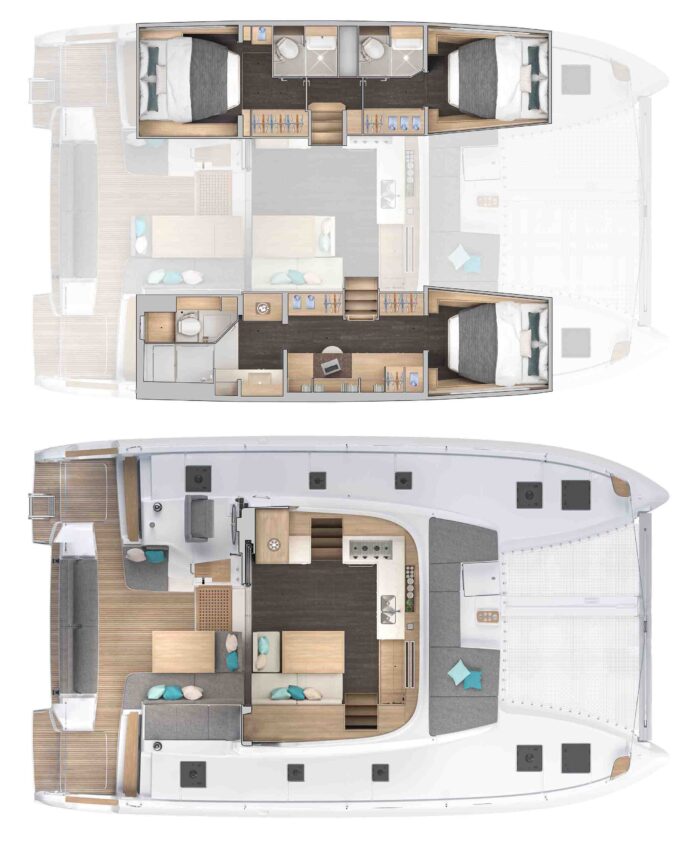
Technical sheet
